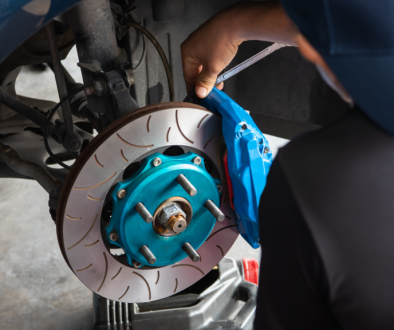Electrical issues in trucks can sneak up on you, and when they do, they’re not just a hassle—they can cost you time, money, and peace of mind. Whether it’s flickering lights, a clicking starter, or electronics that suddenly stop working, these problems often start small but can escalate quickly if left unchecked. The good news? Most electrical problems aren’t as intimidating as they seem once you know where to look. In this guide, we’ll walk through the basics of truck electrical systems, help you identify common warning signs, and show you practical steps to diagnose and address issues before they turn into major headaches. Let’s get your truck back on track.
Understanding the Basics of Truck Electrical Systems
Electrical problems in trucks can be frustrating and costly if left unchecked. Modern trucks rely on complex electrical systems that power everything from the ignition to safety features. When something goes wrong, it’s not just inconvenient—it can lead to downtime, missed deliveries, or even unsafe driving conditions.
Before jumping into troubleshooting, let’s cover the main components of a truck’s electrical system:
- Battery: Provides initial power to start the engine and runs electronics when the truck isn’t running.
- Alternator: Keeps the battery charged and powers electrical components while the engine is running.
- Starter: Engages the engine’s flywheel to get the truck running.
- Fuses and Relays: Protect the system from overloads and distribute power to circuits.
- Wiring Harness: Connects all electrical components through a network of wires.
Common Signs of Electrical Problems in Trucks
Dimming or Flickering Lights
A weak alternator or battery that cannot hold a charge properly could be the cause of dimming headlights or dashboard lights while driving.
Frequent Blown Fuses
An occasional blown fuse isn’t a big deal, but if it’s happening often, there might be a short circuit or overloaded system that needs attention.
Clicking Noise When Starting
That clicking sound when you turn the key? It’s usually a sign that your battery is weak or your starter is on its way out.
Unresponsive Electronics
If your power windows, radio, or other electronics suddenly stop working, you’re likely dealing with a wiring or fuse issue.
Battery Warning Light
When the battery light on your dashboard lights up, it’s often linked to the alternator or charging system. Don’t ignore it.
Step-by-Step Guide to Diagnosing Electrical Problems
Step 1: Inspect the Battery
- Look for Corrosion: Check the terminals for buildup, which can block the flow of electricity.
- Measure Voltage: Use a multimeter to check if the voltage is around 12.6 volts when the truck is off.
- Perform a Load Test: This test checks if the battery can hold a charge under load. A failing battery won’t pass.
Step 2: Evaluate the Alternator
- Inspect the Belt: A loose or worn belt can stop the alternator from doing its job.
- Test Voltage Output: Measure voltage at the battery terminals while the engine is running. A healthy alternator should output between 13.8 and 14.4 volts.
Step 3: Check Fuses and Relays
Pop open the fuse box (usually under the hood or dashboard) and look for blown fuses or faulty relays. Replace any damaged components, but keep an eye out for recurring problems.
Step 4: Examine the Wiring
Wiring issues are tricky but common. Look for frayed wires, loose connections, or melted insulation. A wiring diagram for your truck can make this process much easier.
Step 5: Test the Starter
If your truck isn’t starting but the battery and alternator are fine, the starter could be the issue. Listen for grinding or clicking sounds when turning the key. Use a multimeter to check for proper voltage at the starter.
Preventive Maintenance for Truck Electrical Systems
You can avoid many electrical issues by staying on top of routine maintenance:
- Check the Battery Monthly: Look for corrosion and ensure the terminals are secure.
- Test the Charging System: Include alternator and battery checks during routine inspections.
- Secure Wiring: Replace damaged wires and secure loose ones to prevent shorts.
- Stock Up on Fuses and Relays: Keeping spares handy can save you during emergencies.
- Be Mindful of Add-Ons: Avoid overloading your system with aftermarket electronics.
Tools Every Truck Owner Should Have
- Multimeter: Great for measuring voltage, current, and resistance.
- Battery Terminal Cleaner: Essential for maintaining good connections.
- Wire Crimper and Stripper: Helps with repairing or replacing damaged wires.
- Portable Diagnostic Scanner: Useful for reading fault codes in modern trucks.
- Fuse Puller: Makes replacing fuses a breeze.
- Flashlight: Handy for inspections in low-light conditions.
FAQs
- What causes frequent blown fuses in a truck? Frequent blown fuses often mean a short circuit, overloaded circuit, or damaged wiring.
- How often should I replace my truck’s battery? On average, truck batteries last 3-5 years. Regular testing will help you know when it’s time to replace.
- Why do my truck lights dim when idling? This could indicate a weak alternator or a battery struggling to hold a charge.
- What tools should I use for electrical troubleshooting? A multimeter, wire stripper, and a portable diagnostic scanner are must-haves.
- Can I keep driving with a bad alternator? It’s risky. A failing alternator will drain your battery, leaving you stranded.
Stay Ahead of Electrical Problems
Dealing with electrical problems doesn’t have to be overwhelming. Start with the basics: check the battery, alternator, fuses, and wiring. Stay proactive with regular maintenance, and you’ll avoid the stress of unexpected breakdowns. Small fixes like cleaning terminals or tightening belts can make a huge difference.
The key is catching issues early and addressing them before they escalate. Keep the right tools on hand, stay prepared for different weather conditions, and don’t hesitate to seek professional help if something doesn’t seem right.




